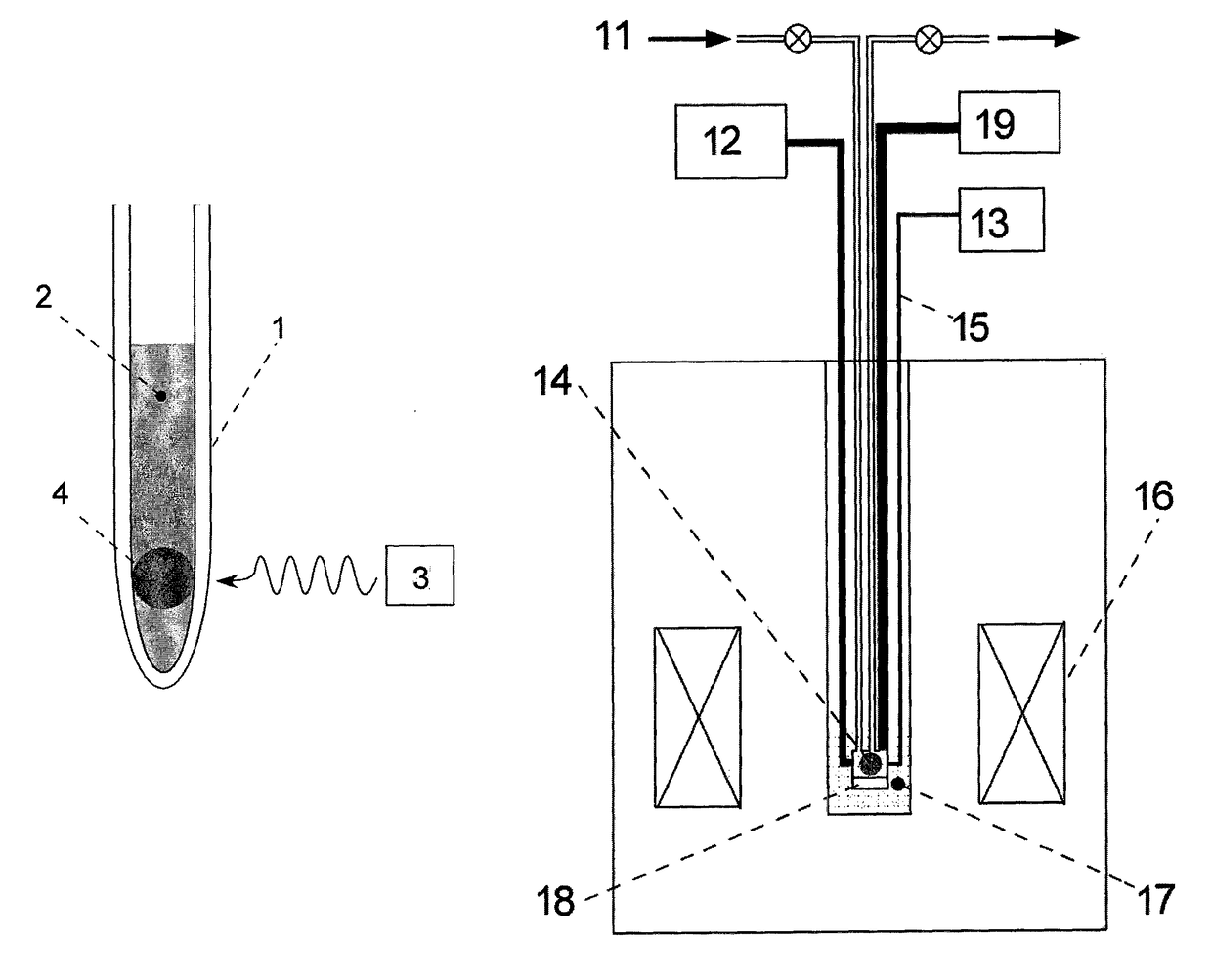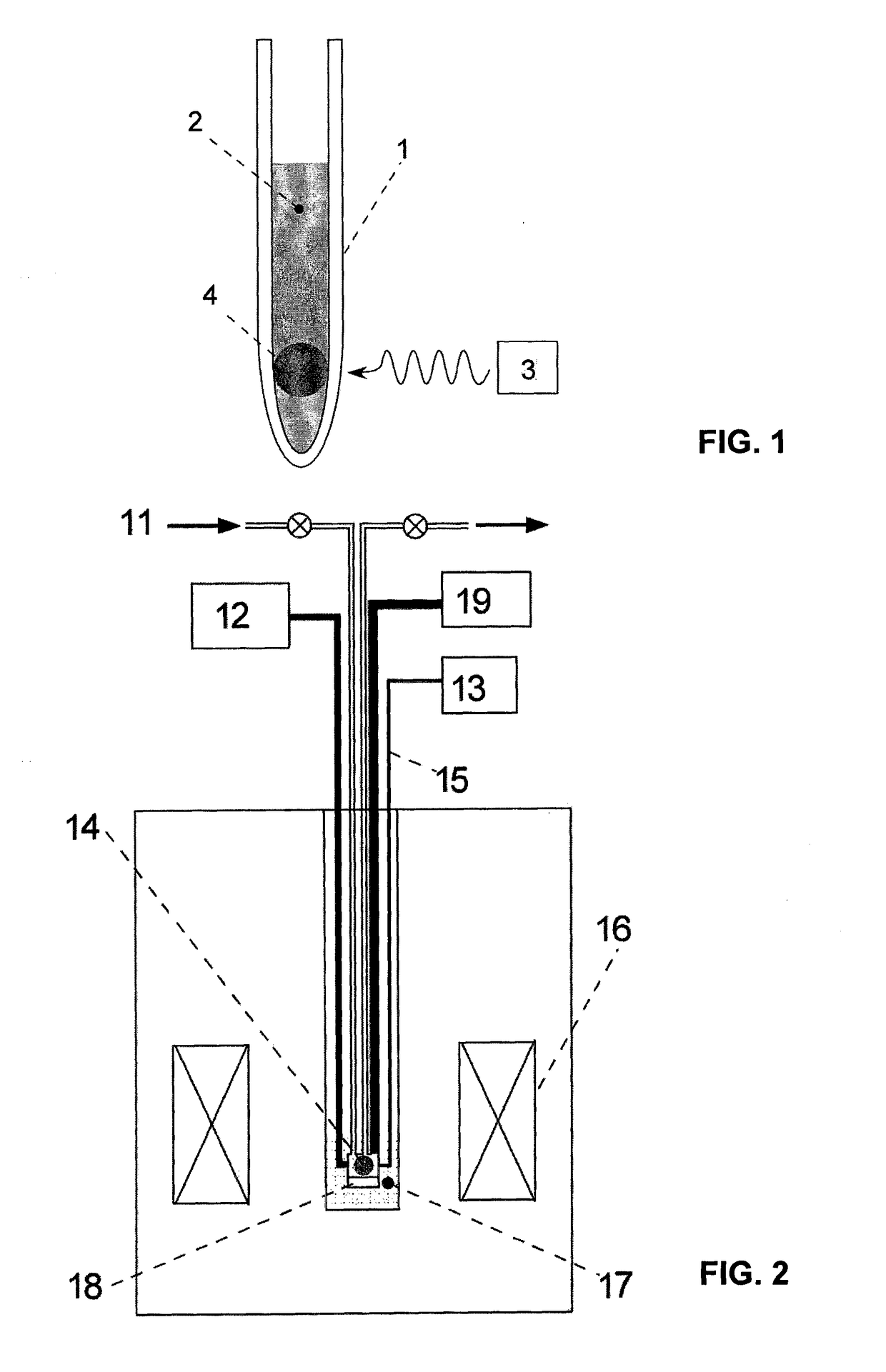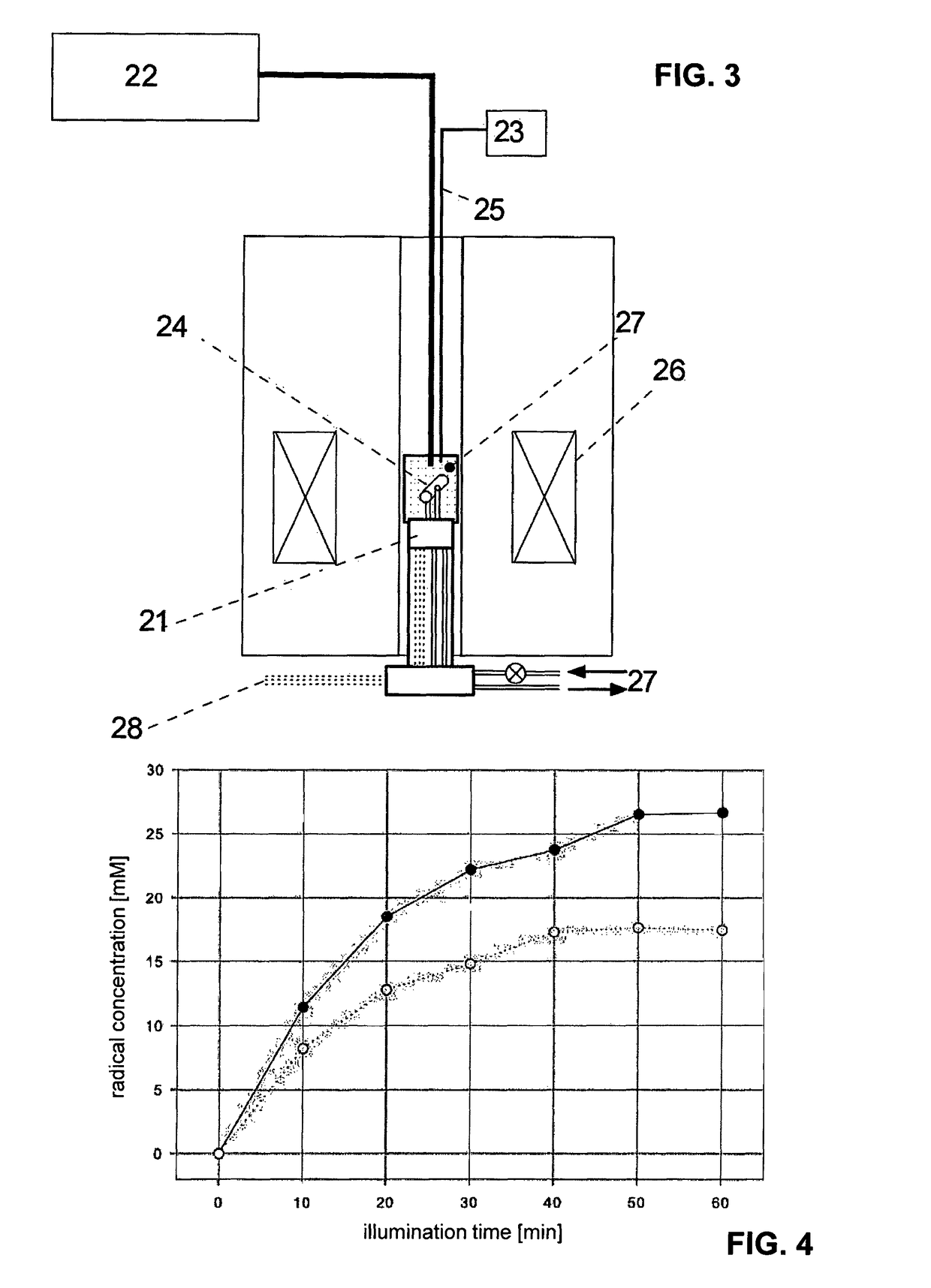Method for the generation of radicals for dynamic nuclear polarization and uses thereof for NMR, MRS and MRI
a nuclear polarization and radical technology, applied in the field of dnp, can solve the problems of increased hyperpolarization of molecules, increased risk of contamination, loss of polarization, etc., and achieve the effect of increasing the signal-to-noise ratio (snr), shortening the life time, and enhancing the polarization of substrates
- Summary
- Abstract
- Description
- Claims
- Application Information
AI Technical Summary
Benefits of technology
Problems solved by technology
Method used
Image
Examples
Embodiment Construction
[0087]An example of an experimental set-up is schematically shown in FIG. 1. The radical concentration can be measured by ESR prior to inserting the sample inside the DNP polarizer (see FIGS. 4 and 5). In the FIG. 1, 1 designates a cryostat transparent to irradiating light, 2 liquid nitrogen, 3 a light source and 4 is a frozen sample containing polarizable molecules e.g. with maleic acid, fumaric acid or one or more alpha-diketone functional group.
[0088]In a second example of an experimental set-up schematically shown in FIG. 2, the radicals are produced inside the polarizer by irradiation through an optical fiber. In this case 11 designates a warm or cold fluid to thermalize or dissolve the frozen sample in order to force the scavenging of the radicals prior to sample extraction, 12 a microwave source tuned to the frequency corresponding to the absorption of the electron and nuclear spins system in the frozen sample, 13 a light source, 14 a frozen sample containing polarizable mole...
PUM
 Login to View More
Login to View More Abstract
Description
Claims
Application Information
 Login to View More
Login to View More - R&D
- Intellectual Property
- Life Sciences
- Materials
- Tech Scout
- Unparalleled Data Quality
- Higher Quality Content
- 60% Fewer Hallucinations
Browse by: Latest US Patents, China's latest patents, Technical Efficacy Thesaurus, Application Domain, Technology Topic, Popular Technical Reports.
© 2025 PatSnap. All rights reserved.Legal|Privacy policy|Modern Slavery Act Transparency Statement|Sitemap|About US| Contact US: help@patsnap.com



